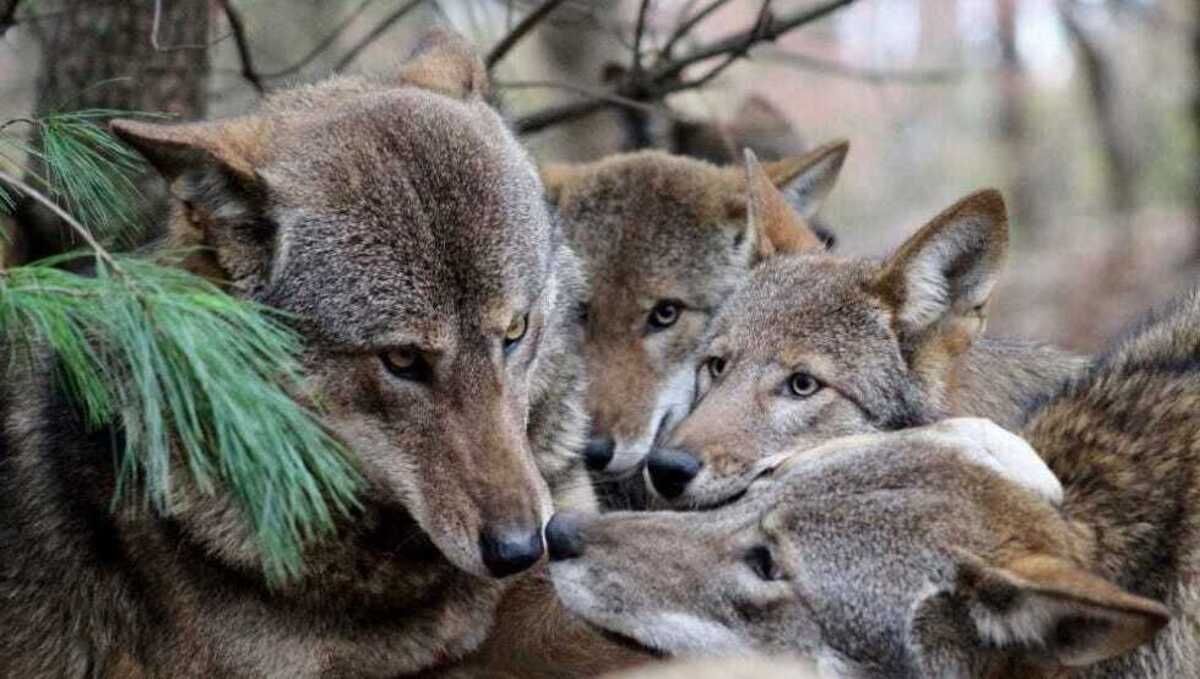Hidden Havens Of The Red Wolf Recovery

Have you ever wondered where you can see red wolves in their natural habitat? These elusive creatures, once on the brink of extinction, now roam freely in select areas of the United States. The Red Wolf Recovery Program has made significant strides in bringing these majestic animals back from the edge. Visiting these hidden havens offers a unique opportunity to witness conservation efforts firsthand. Imagine walking through lush forests, hearing the distant howl of a red wolf, and knowing you are in one of the few places on Earth where they thrive. Ready to learn more about these special locations? Let's dive in!
Discovering the Hidden Havens of the Red Wolf Recovery
The Red Wolf, a critically endangered species, has found refuge in several hidden havens across the United States. These places offer a glimpse into the efforts being made to save this majestic creature. Let's explore some of these sanctuaries where the Red Wolf is making a comeback.
1. Alligator River National Wildlife Refuge
Located in North Carolina, this refuge is a primary site for Red Wolf recovery. It spans over 150,000 acres of diverse habitats, including swamps, marshes, and forests. Visitors can take guided tours to learn about the conservation efforts and possibly spot a Red Wolf in its natural habitat.
2. Pocosin Lakes National Wildlife Refuge
Also in North Carolina, Pocosin Lakes provides a safe haven for the Red Wolf. This refuge covers over 110,000 acres and features a mix of wetlands and upland forests. It's a great spot for birdwatching, hiking, and learning about the Red Wolf's role in the ecosystem.
3. Great Smoky Mountains National Park
Straddling the border between North Carolina and Tennessee, this park is known for its biodiversity. Efforts to reintroduce the Red Wolf here have been ongoing, and the park's vast wilderness areas offer a perfect setting for these elusive animals.
4. St. Vincent National Wildlife Refuge
Situated on an island off the coast of Florida, St. Vincent Refuge is another key site for Red Wolf recovery. The island's isolation provides a controlled environment for breeding and monitoring. Visitors can explore the island's trails and beaches while supporting conservation efforts.
5. Cape Romain National Wildlife Refuge
In South Carolina, Cape Romain Refuge plays a crucial role in the Red Wolf's survival. This coastal refuge includes barrier islands, salt marshes, and maritime forests. It's a fantastic place for kayaking, birdwatching, and learning about the Red Wolf's coastal habitat.
6. Cades Cove, Tennessee
Nestled within the Great Smoky Mountains, Cades Cove is a valley surrounded by mountains. It's a historical area with preserved buildings and abundant wildlife. Efforts to reintroduce the Red Wolf here are part of a broader initiative to restore the natural balance of the region.
7. Red Wolf Education and Health Care Facility
Located in North Carolina, this facility focuses on the health and education of Red Wolves. It serves as a center for veterinary care, research, and public education. Visitors can learn about the challenges facing Red Wolves and the steps being taken to ensure their survival.
8. Wolf Conservation Center, New York
Though not a natural habitat, this center in New York plays a vital role in Red Wolf conservation. It offers educational programs and houses a small population of Red Wolves for breeding and research. The center's efforts contribute to the overall recovery plan for the species.
9. Point Defiance Zoo & Aquarium, Washington
This zoo in Tacoma, Washington, is part of the Red Wolf Species Survival Plan. It provides a safe environment for breeding and raising Red Wolves. The zoo's educational programs help raise awareness about the plight of the Red Wolf and the importance of conservation.
10. North Carolina Zoo
The North Carolina Zoo in Asheboro is actively involved in Red Wolf conservation. It participates in breeding programs and public education initiatives. The zoo's expansive habitats offer a glimpse into the life of the Red Wolf and the efforts to save this endangered species.
The Future of Red Wolf Recovery
Red Wolf Recovery efforts are crucial for preserving this endangered species. These hidden havens provide a safe environment for red wolves to thrive. Supporting these initiatives helps maintain biodiversity and balance in ecosystems. Visiting these areas not only offers a unique wildlife experience but also contributes to conservation efforts.
By learning about and supporting red wolf recovery, you play a part in ensuring their survival. Donations, volunteering, and spreading awareness are simple ways to help. Every small action counts towards a bigger impact.
Next time you plan a trip, consider visiting one of these hidden havens. You'll enjoy a memorable experience while supporting a vital cause. Red wolves need our help, and together, we can make a difference. Let's work towards a future where these magnificent creatures roam freely once again.

